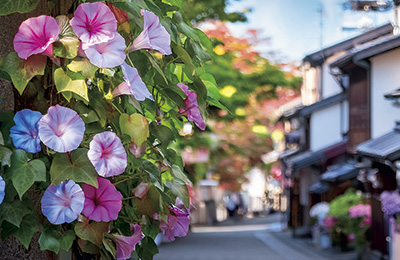
In simultaneous pursuit of the well-being of the earth, society, and people, regeneration is the continuous creation of multidimensional value for multiple stakeholders and for a prosperous future for all.
What Is Regeneration?
Regeneration is about restoring, renewing, and revitalizing the environment. It includes reigniting and tapping the regenerative power of nature to drive a positive cycle of improvement. The shift to renewable energy and wider adoption of regenerative agricultural practices that not only protect but also improve the soil, are examples of this approach.
In a broader sense, regeneration is about a transformation to a net-positive society. It is a paradigm shift to progress measured by not only economic value but also social value. On the other hand, sustainability and SDGs are premised on maintaining existing economic growth models. They aim at reducing harm to the environment with net-zero impact as the finish line for these initiatives.
Regeneration in the City
How can we apply regeneration to the urban environments? Walkable cities are one example. They not only reduce harmful emissions by reducing automobile traffic in cities, but also can have diverse positive impacts on the life of their citizens. Walkable cities contribute to improved health and well-being by encouraging people to walk, to engage with other members of the community, and to spend more time getting to know and love their city. If we were look at a transition from car to pedestrian mobility only through the lens of economic growth, the formula of “walking time” = “cost and inefficiency” would make a shift to walkable cities an inconvenient and undesirable choice. However, but viewed from health, environmental benefits and other perspectives, walkable cities are an “investment in the future.”
Urban farms are another regenerative initiative. They not only promote greening of the city, but also create a new service. Member growers pay a fee and participate in food production, and in the process of growing food together, urban farmer create new communities. Literally in touch in with nature and the soil of their city , people enjoy an improved sense of well-being. Their efforts also raise the food self-sufficiency rate of the city. Local food sourcing also reduces long-distance transport of food and the related energy consumption. While the economic lens may see urban farming simple as “vegetable cultivation” = “inefficient use of time and labor,” but from a broader perspective, this initiation is an “investment in the future.”

Necessity is the mother of regeneration
Since the Industrial Revolution, the goal of economic growth has driven technological innovation. However, out of increasing concerns about climate change and its impact has emerged an urgent need to rethink economic growth within the context of preserving and protecting the environment. This understanding has given birth to international cooperation frameworks such as the SDGs (Sustainable Development Goals) and the COP (Conference of the Parties to the United Nations Framework Convention on Climate Change). Governments, corporations, and individuals have answered the call to action, and are working to achieve environmental improvement targets.
However, even these global efforts are insufficient, and it is increasingly clear that widespread adoption of SDGs is simply not enough. The SDGs are merely an attempt to stop environmental destruction based on continuing the conventional economic growth mode. As long as the world continues down the current course of economic growth, harm to the environment will never disappear. Another major issue is who will bear the cost of achieving the SDGs. There is a growing debate about a fundamental question. Do we need to rethink our concept, metrics, and model for economic growth itself?
As the Arab Spring, Brexit and other global events have demonstrated, GDP growth has not necessarily led to a fulfilling life and well-being for people who live in those countries. The information revolution and digital technologies including AI are not only widening existing disparities, but also creating new social divisions. The COVID-19 pandemic has led to a growing movement to reexamine social connections, people’s well-being, and lifestyles. All the events have sparked lively discussion about re-examining the values that we currently desire to achieve, and redefining growth for the future. The premise of these discussions is focused on the well-being of the planet, society, and people, rather than the traditional economic growth model founded on economic capital.

Private sector regeneration initiatives and their importance
Utilizing existing resources, regeneration can continue to generate multidimensional value. Compared to the traditional economic model of resource exploitation, the regenerative approach is simply more economically rational. Even more encouraging is that environmental health and economic growth need not be a cost-benefit relationship. Regenerative mechanisms can both better the environment and drive the economy. This generation of multiple diverse social value, the rationality of the economic model and its win-win cycle are all meaningful and persuasive reasons for corporations to shift to a vision of regeneration.

Regeneration in Japan
In western cultures, nature and humankind have been treated as separate systems that exist independent of each other. On the other hand, Japanese culture and society has roots in polytheism. The resulting value system has fostered recognition of the interdependence of people and nature, and the creation of a multipolar society. That means people define themselves in the context of their relationships with others. Rather than a quest to shape oneself as an individual independent of external factors, Japanese have typically sought a path of harmony with each other and their world. For this reason, the Japanese people tend to be more receptive to accepting and creating pluralistic values. A good example is the spirit of “sanpo-yoshi” (literally “three-way satisfaction) – a centuries-old concept that advocates a win-win-win relationship among buyer, seller and community . Today this way of thinking is especially relevant when applied to the pursuit of regeneration. Perhaps the ability to not only resolve but also promote unique “pluralistic values” will prove to be globally a strength of Japan in encouraging adoption of regeneration on the global stage.





